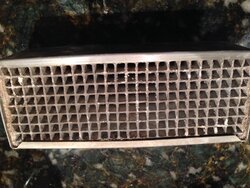Hello everyone. I installed a VC Intrepid II to heat our family room last year. I'm struggling with the catalytic operation of this stove. I may have a draft problem or a MC problem or a combination of the two.
My Rutland griddle surface thermometer has a "burn zone" of 300-600 degrees. After starting the stove I wait until the temperature gets to 600 degrees and a good bed of coals before closing the damper. When closing the damper I will often hear a blowtorch sound if I wait until griddle temp reaches 600 that I don't get at lower temps. Is that the sound of the catalyst lighting off? Can the damper be closed at lower temperatures?
Sometimes the temperature will maintain 550-600 after closing the damper, but not always. More often than not the griddle temp will fall off to around 400-450 degrees when I need the temperature closer to 600 to heat the room. So I have to open the damper to get the temperature back up, forfeiting the efficiency of the catalytic operation. I've noticed that there is often more smoke coming out of the chimney with the damper closed than with it open, and this is opposite what the VC owner's manual says I should be seeing if the catalytic operation is working. So I'm really not sure that the catalyst is lighting off or staying lit.
The stove pipe runs up a masonry exterior chimney. It does not have the best draft and I sometimes have to reverse the draft to get the stove started on a cold day. The wood is ash that has been outside covered for about a year. It burns well but is probably not fully seasoned. Over firing is definitely not a problem with this stove. I suspect that the draft may be inadequate and perhaps the reason why it's so difficult to get good catalytic operation out of this stove.
This is my first time posting. Splitting wood is my zen. I am addicted to wood heating and desperately want this to work. Any advice greatly appreciated!!
My Rutland griddle surface thermometer has a "burn zone" of 300-600 degrees. After starting the stove I wait until the temperature gets to 600 degrees and a good bed of coals before closing the damper. When closing the damper I will often hear a blowtorch sound if I wait until griddle temp reaches 600 that I don't get at lower temps. Is that the sound of the catalyst lighting off? Can the damper be closed at lower temperatures?
Sometimes the temperature will maintain 550-600 after closing the damper, but not always. More often than not the griddle temp will fall off to around 400-450 degrees when I need the temperature closer to 600 to heat the room. So I have to open the damper to get the temperature back up, forfeiting the efficiency of the catalytic operation. I've noticed that there is often more smoke coming out of the chimney with the damper closed than with it open, and this is opposite what the VC owner's manual says I should be seeing if the catalytic operation is working. So I'm really not sure that the catalyst is lighting off or staying lit.
The stove pipe runs up a masonry exterior chimney. It does not have the best draft and I sometimes have to reverse the draft to get the stove started on a cold day. The wood is ash that has been outside covered for about a year. It burns well but is probably not fully seasoned. Over firing is definitely not a problem with this stove. I suspect that the draft may be inadequate and perhaps the reason why it's so difficult to get good catalytic operation out of this stove.
This is my first time posting. Splitting wood is my zen. I am addicted to wood heating and desperately want this to work. Any advice greatly appreciated!!



 . With the stove fully up to temperature and a good bed of coals established the stove seems to be performing well with the damper closed and virtually no smoke coming out of the chimney.
. With the stove fully up to temperature and a good bed of coals established the stove seems to be performing well with the damper closed and virtually no smoke coming out of the chimney.